Glossary of Internet Marketing Terms

The terms below, you will come across on all the forums, blogs and videos dealing with the subject of Internet Marketing.
If your new to IM, these will be a complete mystery and will give you no context of what you might end up in conversation about.
So we have prepared a handy list below, which you will pick up fairly quickly anyway. To arm you with the necessary IM lingo talking to other Internet Marketers out there.
A/B Testing
Split testing two versions of a landing page. Creative differences will be applied to layout, CTA’s, colours to see which page gives you a better performance in terms of conversion rate.
Above The Fold / Below The Fold
Ad Blocking
Advertising
Paying to have exposure on a brand, its services, products through online or offline activity.
Affiliate
Affiliate Network
Analytics
Collection of data, usually gathered together in software such as Google Analytics. This is the tracking of every action someone can perform on a webpage or device.
Annual Recurring Revenue
Yearly income, (ARR) is usually referring to the positive/negative balance of subscription type services online.
Autoresponder
Banner Ad
Blogging
A term to describe a website that publishes articles focused on specific, or a wide variety of related topics. A blog can be run by an individual or a company. Used to help with SEO for the website owner, it can also be used to help drive traffic, or convert traffic into leads etc.
Bounce Rate
A percentage of the number of people who visit a page of your website, and exit without performing any other action.
Buyer Persona
A description of the ideal buyer of products or services, profiled through research.
Business-to-Business (B2B)
Used to describe a business that purely sells to another business.
Business-to-Consumer (B2C)
Used to describe a business that will sell to consumers only.
Caching
Call To Action (CTA)
CDN
Churn
The percentage of your customers that cancels your service or product, and leaves.
ClickThrough Rate (CTR)
The CTR is a calculation of the clicks divided by impressions. Used mostly in paid marketing campaigns.
Cold Calling
Ringing individuals by phone, without ever having spoken to them before.
Cold email
Similar to cold calling, but using emails instead to contact individuals.
Content
Simply information created and published online, in the form of text, image, video or audio files.
Content Management System (CMS)
Software that is a foundation of creating content, and makes management of it easier.
Contextual Advertising
Conversion Path
The journey a user will take, from A to B of a webpage or layout, from performing actions required, where they will become a lead or purchase a product.
Conversion Rate
The percentage of people who perform an action on a webpage. This could be filling in a form or downloading content etc.
Cookie
Cost Per Click (CPC)
The cost of each click a user performs.
Cost Per Impression (CPI)
Cost Per Lead (CPL)
Cost Per Mille (CPM)
Customer Acquisition Cost (CAC)
The full cost of acquiring each customer, by dividing to total amount spent obtaining them.
Customer Relationship Management (CRM)
Software used to manage and organise all the details of customers you have.
Dedicated IP and Shared IP
Demographics
A profiling of people, based on age, gender etc.
Digital Marketing (Online Marketing)
Marketing via numerous types of online marketing to your ideal customers.
Domain Name
Domain Name Servers (DNS)
Ebook
A digital book, which usually comes in PDF format, but there are quite a few other formats.
E-Commerce
The name given to selling both digital or physical products online.
eCPM
A digital message you send to other individuals or a list of individuals.
Engagement
Engagement can be measured in plenty of different ways, and applied in quite a few online mediums. But it is a way to simply keep track of how much your audience is paying attention to what content you put out.
Engagement Rate
The measurement of any action performed on content. Likes, shares, comments, views etc.
Funnel
Hashtag
Used mainly in social media, a word to put in your posts related to the topic you are talking about, used for trending purposes.
HTML
Impression
Inbound Marketing
Content produced and optimised to engage and draw users to a website, rather than paid advertising.
Infographic
Content that combines text and imagery for better illustration.
Keyword
A specific word or phrase your target audience is searching online for.
Key Performance Indicator (KPI)
The term to measuring what metrics of performance, are most important to a campaign or a business.
Landing Page
Used as a term to describe a singular piece of a website, mainly in the context of convincing the user to take an action on the desired page.
Lead
The collected details of an individual or company that has shown interest in your services or product.
Lead generation
Internet marketing activities that lead to the collection of a users details, which you need to complete an offer or transaction.
Lead Magnet
Lead Nurturing
A captured lead, and using the details of the lead to reach out and engage, to create a relationship that will end in a sale or conversion.
Lead Qualification
Setting specific criteria that determines whether a lead is exactly what you are after.
Lifetime Customer Value (LTV)
The average monetary value you will get from a customer, over the lifetime of them using your services or products.
Margin
The profit from a product or service, after all other business expenses have been deducted.
Marketing Automation
The automation of a variety of marketing types that means they will continue being active, when you are not manually doing anything with them. Examples are lead generation and email marketing autoresponders.
Market Research
The research carried out, for whatever project you are about to undertake.
Merchant
Monthly Recurring Revenue (MRR)
The monthly revenue of subscribers to your product or services.
MTA
Niche Market/Business
A very specific subset of a topic to target from Internet Marketing.
Onboarding
When referring to a new client, or affiliate if you are a network. The introduction of your products or services.
Opt out / Opt in
Offer
This is the offering designed to appeal to the users on your website/landing page.
Pageview
Pay Per Click (PPC)
Used to describe online paid advertising wherever you have to pay for each click.
Pay Per Lead (PPL)
Pay Per Sale (PPS)
Same as PPL, but for a sale of a product.
Qualified Lead
A lead that is qualified, meets the specific criteria set for it, or buyer attributes you set out to collect from online activity.
Referral
A potential customer that has been given to you, by someone you already know, or likely are working with.
Remarketing
Responsive Design
Where a website is coded specially so that when viewed on different devices, it automatically resizes to the dimensions of the device to give a clean user experience.
Return On Ad Spend (ROAS)
The money you get back from spending on advertising.
Return On Investment (ROI)
The positive or negative figure you get back from any investment you make in business.
Sales Funnel
The sales process as a whole, from the start when a customer is just a prospect, to the end where they become a paying customer.
Search Engine
Search Engine Optimization (SEO)
The onpage and offpage optimization of your website, enabling you to get properly indexed to gain more web traffic.
SERP
Shopping Cart
Social Media
Platforms such as Facebook, Linkedin, Snapchat, TikTok, Pinterest and Twitter.
Spam
Traffic
URL
Unique Selling Proposition (USP)
USPs are crucial in whether your selling a product or a service, it’s pointing out to the buyer what makes it special.
User Experience
The user experience is a measurement of how easy the user found all aspects of their experience on the web property they were sent to.
Viral Marketing
Marketing where content gains traction and engagement without you influencing that growth.
Vlog
A video blog.
© Internet Marketer Resource 2020
